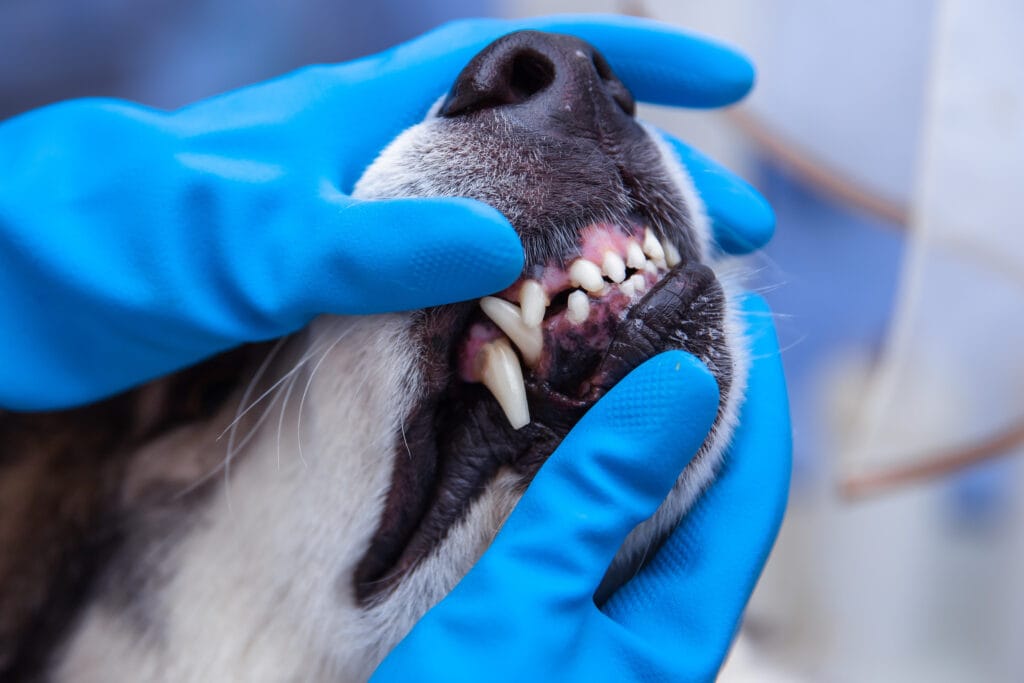Knowing when your dog needs a dog dental cleaning can be tricky. Many pet parents dismiss bad breath as just a normal part of having a dog, but the truth is, it’s often the clearest first sign that your companion needs help—long before their discomfort becomes obvious.
- Sign #1: the obvious clue — “Doggy Breath” is more than just an annoyance
- Sign #2: a look inside – red or swollen gums
- Sign #3: the telltale buildup — yellowish-brown tartar
- From signs to certainty: how to know for sure
- Deciding the right path for your pet
- Addressing the next questions: risks and costs
- Conclusion: trust your instincts and take the next step
As a pet parent, you know that instinct—that quiet feeling when something is just a little off with your best friend. That gut feeling is often the very first step in answering the question: “Does my dog need a dog dental cleaning?”
For too long, we’ve been told to dismiss persistent “doggy breath” as a normal part of pet ownership. But the truth is, these subtle clues are your companion’s way of signaling they need help with their Pet’s Oral Hygiene.
These aren’t just minor issues; they are the earliest warnings of developing dental trouble, and they appear long before serious discomfort sets in.
This guide is designed to empower you to trust that instinct. We’ll teach you how to spot the three most important signs, helping you translate those quiet signals into confident action.
Sign #1: the obvious clue — “Doggy Breath” is more than just an annoyance
That strong, persistent odor you’ve been noticing isn’t just “doggy breath”—it’s almost always the result of harmful bacteria building up in your dog’s mouth.
We’ve all been there: you lean in for a cuddle with your best friend and have to pull back. While it’s easy to laugh it off, it’s better to think of that bad breath as a smoke alarm. The alarm itself isn’t the fire, but it’s the clearest warning that something is brewing beneath the surface.
This odor is produced by bacteria feeding on food particles left on the teeth, which then creates a sticky film called plaque. When left unchecked, this plaque hardens into tartar, leading to bigger issues down the road.
So, when you notice that smell, you’re not overreacting; you’re being a great pet parent. Trusting your nose is one of the most reliable first steps to determining if your dog needs a dog dental cleaning, and it’s a sign that deserves to be taken seriously.
Sign #2: a look inside – red or swollen gums
That redness along your dog’s gumline is a clear sign of inflammation—the body’s natural response to the same plaque and bacteria that cause bad breath.
We know it can feel a little strange to gently lift your dog’s lip for an inspection, but it’s one of the kindest things you can do. Healthy gums should have a smooth, healthy pink color, fitting snugly around each tooth.
When you see a bright red or puffy line where the tooth meets the gum—or notice a little bleeding when they chew on a toy—it’s a sure sign of irritation. This is very similar to our own dental health: if we forget to floss, our gums can get sensitive. That inflammation is your dog’s body working hard to fight off the bacteria causing that buildup.
Taking a gentle peek is a vital step in knowing if your dog needs a dog dental cleaning. It’s a direct window into their comfort, revealing an issue they simply can’t tell you about.
Sign #3: the telltale buildup — yellowish-brown tartar
That hard, yellowish-brown substance you see on your dog’s teeth—especially near the gums on the back teeth—is tartar.
Think of tartar as plaque that has been left to harden. When that sticky bacterial film isn’t removed through chewing or brushing, it mineralizes into a crusty, concrete-like deposit. This isn’t just a cosmetic issue.
Tartar creates a rough surface that attracts even more plaque and can push its way under the gumline, leading to the irritation and redness we mentioned earlier. Unlike soft plaque, this hardened substance cannot be brushed away at home.
Seeing this buildup is the most definitive sign that your dog needs a pet dental cleaning. It’s the clearest indication that professional tools are needed for its safe, gentle, and effective removal.
From signs to certainty: how to know for sure
The honest answer is this: if you’ve noticed one or more of the signs we’ve discussed, you already have your answer. It’s time to trust your eyes.
We can’t say this enough: you are the expert on your own dog. As a loving pet parent, your intuition is incredibly powerful, and now you have the visual confirmation to support it. You’ve noticed the breath, taken a peek at their gums, and spotted the tartar buildup.
These aren’t just vague hints; they are clear, direct signals that it’s time for a professional cleaning to reset their oral health. Acting on these signs now is the very definition of proactive care—it’s how you prevent a small issue from becoming a much bigger problem.
So, how do you know for sure? You trust your eyes. Your observation isn’t just a hint—it’s the confirmation that your dog needs a dog dental cleaning.
Deciding the right path for your pet
You’ve spotted the signs, and that’s a crucial first step. Now, it’s about choosing the right path.
Our anesthesia-free cleaning is a powerful preventive tool. It’s the perfect, holistic-friendly option for routine maintenance (e.g., every 6 months) to prevent serious disease or address mild to moderate buildup. It’s also a vital solution for pets where anesthesia is a medical concern.
However, if you see signs of severe disease (like heavy tartar buildup, very swollen or bleeding gums, loose teeth, or extreme bad breath), the proper course is a curative treatment. This requires a full veterinary check-up, potentially under anesthesia, to address possible periodontal disease or the need for extractions, which we do not perform.
Our service is the first line of defense to help ensure your pet never reaches that serious stage.
Addressing the next questions: risks and costs
Once you know a cleaning is needed, this is the most important question to ask. It’s where the benefits of a modern dental cleaning without anesthesia truly shine. The primary concern for most pet parents is the risk of general anesthesia—an issue that is especially worrying for older companions or those with health issues.
Our service was founded on the simple belief that a routine, preventative cleaning shouldn’t require such a serious medical step. Because our process is entirely sedative-free, it removes that primary risk from the equation, offering you total peace of mind.
When it comes to cost, a proactive pet dental cleaning is a valuable investment in your dog’s long-term health. It is also often significantly more affordable than a traditional procedure performed under anesthesia at a veterinary clinic.
Deciding your dog needs a dental cleaning shouldn’t force you into a difficult choice. We offer a path that is safer, calmer for your best friend, and a sensible investment in their happy future.
Conclusion: trust your instincts and take the next step
Trusting your instincts as a pet parent was the most important first step; now, you have the knowledge to act on them. You’ve learned how to spot the key signs of dental trouble, from the first hint of bad breath to the undeniable sign of tartar.
Seeing these signs is the confirmation you needed: it’s time to act. It’s why a modern dental cleaning without anesthesia exists—to remove the biggest hurdles of risk and cost from your decision.
Your journey from a worried question to a confident answer is complete. The next step is simple and stress-free.
Reach out to our friendly team to discuss what you’ve observed and learn how we can restore their sparkling smile through the gentle, safe, and magical experience your best friend deserves.

